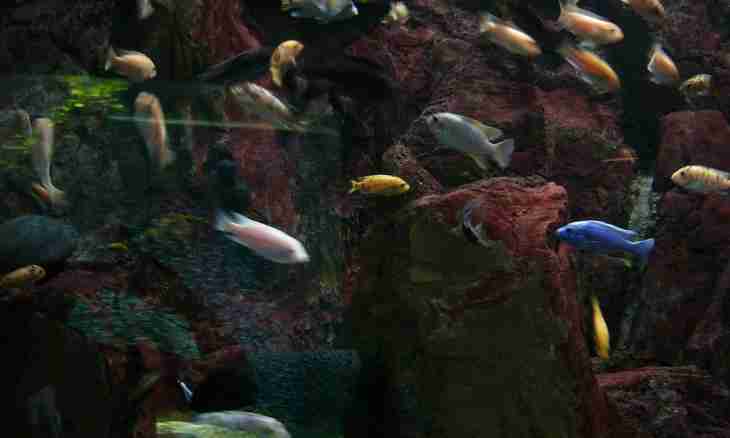Aquarium fishes live in the confined world. Their measured life does not influence life of owners, in difference, for example, from cats or dogs in any way. Inhabitants of house "reservoirs" are not capable to wag a tail or to purr tenderly. But the experienced aquarian who cares for the phlegmatic pets always has to be on the lookout. The atypical behavior of small fishes can be the certificate of a serious disease. In time to suspect a disease, it is necessary to distinguish well normal and inadequate behavior of aquarian inhabitants.
Main types of non-standard behaviorThe behavior of small fishes is usually affected by instincts, such as self-preservation or reproduction. In appearance identical actions can be caused by various reasons not always connected with instincts. For example, burying in soil can mean that the small fish tries to avoid danger. The same behavior can demonstrate that the female prepares a nest for spawning. And some types in such a way mask for hunting.
Aquarian inhabitants have no opportunity to tell about the requirements in a different way, except as through "sign language" and change of coloring. There are general signals characteristic of all species of fish. But is also such which are inherent only in certain subspecies or family. For example, if the small fish swims to another and shows widely open mouth, usually it is an indicator of "front threat". And this behavior can be both attack, and defense. And some species of males in such a way flaunt before females during the spawning period.
If the small fish is developed by side and kolykhat all over or only a tail fin, it is the widespread gesture of courting peculiar practically to all species of fish. But there are also exceptions: some underwater inhabitants so express "side threat". The small fish who spread wide fins can be both the boyfriend, and the opponent, depending on a look. Scattering the fins, the underwater inhabitant tries to show the "big" sizes and a bright color that usually attracts individuals of other floor. But if demonstration is made for the fellow of other look, then its main objective to show all the mighty opportunities.
Small fishes with suspicious outgrowths-spots-behavior it is necessary to transplant from the general aquarium in quarantine, to determine by symptoms what became the anomaly reason and to be accepted to treatment if it is necessary.
Coloring change, for example, during spawning is peculiar to many aquarian inhabitants. Bright colors of scales help partners to find each other. But out of the period of reproduction, a small fish have usually less colorful appearance. It helps the victims to hide better from predators, and to predators – on the contrary, to hunt more successfully. There are small fishes who change color during care of the newborn posterity. The elegant coloring of parents helps whitebaits not to be lost and works as derivation at the moments of attack of predators on family.
Reasons of aggressive behavior of small fishesAggression is inherent not only to predatory individuals. Small fishes show hostility when they win the territory or protect the corner. During spawning and protective reaction to danger lines of aggressive behavior can carry rivalry too. The causeless hostility is not peculiar to small fishes. If at first sight it was not succeeded to solve a source of irritability of pets, it is necessary to observe attentively aquarian life to find out and eliminate motives of such behavior.
The aggressive behavior of any small fish can become a vital issue in your aquarium. It is almost only reason of receiving wounds and also injuries at aquarium fishes.
If the small fish suddenly bit off a fin of the fellow, it does not speak about her aggressive behavior. Happens so that small fishes just take tails and fins of neighbors for something edible. Instinctive reaction not always gives the chance to make out closer what she tries to grasp. Therefore it is necessary to plan carefully a species diversity of pets for the aquarium, excepting the neighbourhood of incompatible types.

